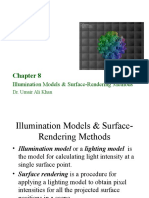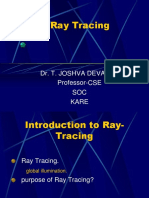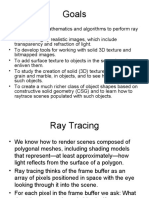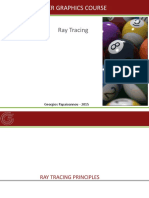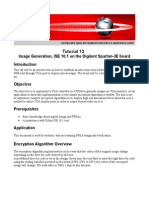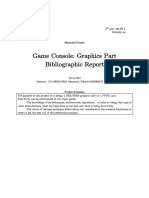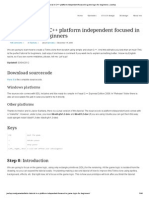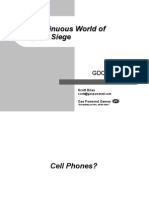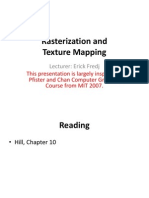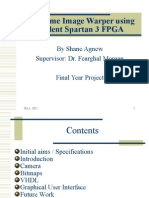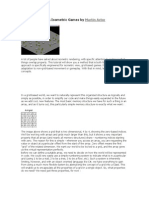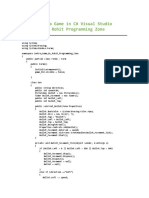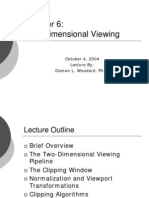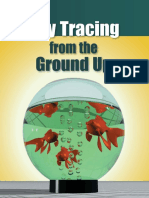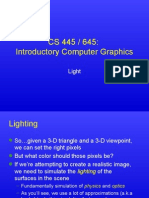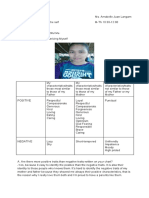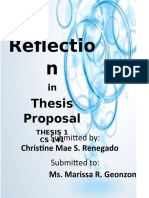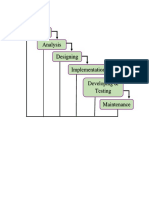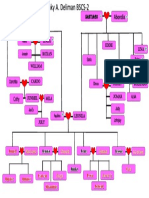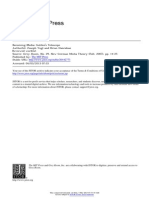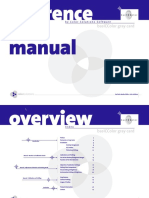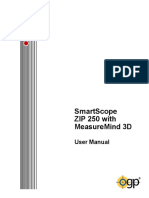0% found this document useful (0 votes)
128 views26 pagesLighting vs. Shading Explained
Lighting involves computing the luminous intensity for points in a scene given light sources and their interactions with objects. Shading assigns colors to pixels. There are two main components - light source properties like color and shape, and object properties like material and geometry. Light can transmit through, reflect off of, be absorbed by, or emitted from matter. Materials are described by properties like diffuse, specular, ambient, and emission colors. The bidirectional reflection distribution function models reflectance. Analytical BRDF models include empirical and microfacet models which assume surfaces are composed of micro-mirrors. Common light sources include ambient, point sources, spotlights, and distance lights.
Uploaded by
Ray-Ray OdagenerCopyright
© © All Rights Reserved
We take content rights seriously. If you suspect this is your content, claim it here.
Available Formats
Download as PPTX, PDF, TXT or read online on Scribd
0% found this document useful (0 votes)
128 views26 pagesLighting vs. Shading Explained
Lighting involves computing the luminous intensity for points in a scene given light sources and their interactions with objects. Shading assigns colors to pixels. There are two main components - light source properties like color and shape, and object properties like material and geometry. Light can transmit through, reflect off of, be absorbed by, or emitted from matter. Materials are described by properties like diffuse, specular, ambient, and emission colors. The bidirectional reflection distribution function models reflectance. Analytical BRDF models include empirical and microfacet models which assume surfaces are composed of micro-mirrors. Common light sources include ambient, point sources, spotlights, and distance lights.
Uploaded by
Ray-Ray OdagenerCopyright
© © All Rights Reserved
We take content rights seriously. If you suspect this is your content, claim it here.
Available Formats
Download as PPTX, PDF, TXT or read online on Scribd
/ 26


